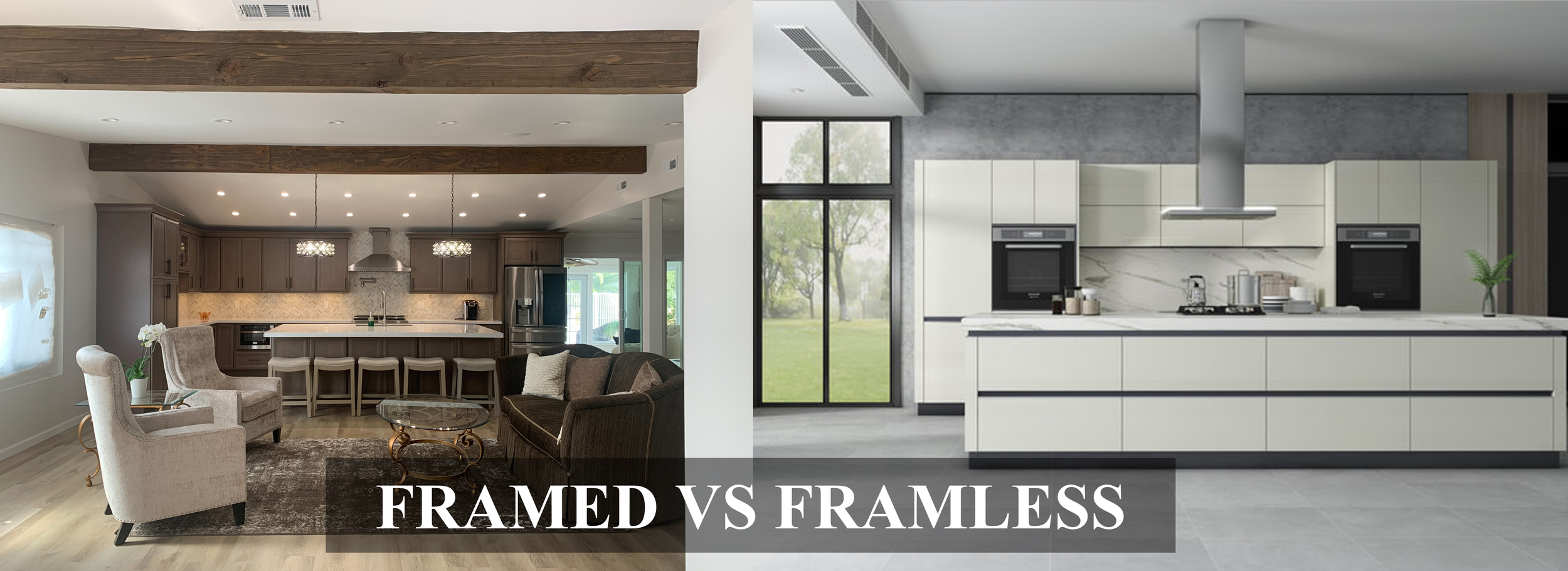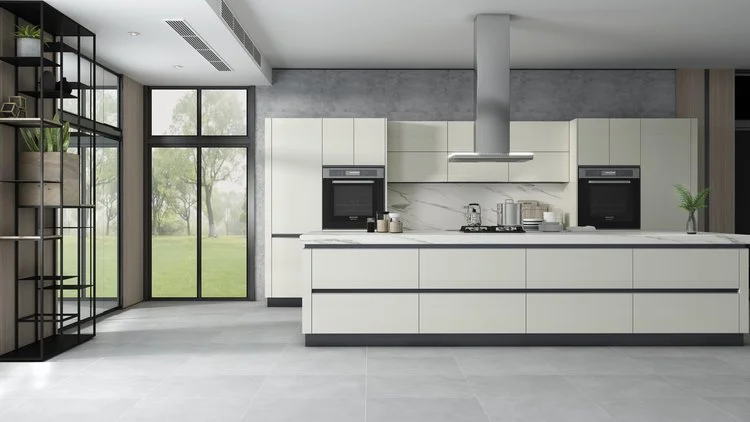What is the Difference Between Framed and Frameless Kitchen Cabinets?
Framed and frameless kitchen cabinets differ in their construction and design.
Framed kitchen cabinets have a frame around the front of the cabinet box, usually made of solid wood, which provides support for the doors and drawers. The frame is usually visible on the front of the cabinet, and the doors and drawers are mounted to the frame. This type of cabinet construction is also known as "face-framed" cabinetry.
On the other hand, frameless kitchen cabinets, also known as "European-style" cabinets, do not have a frame around the front of the cabinet box. Instead, the doors and drawers are mounted directly to the sides of the cabinet box. This creates a more streamlined and modern look and also provides more storage space inside the cabinet.
Both types of cabinets have their pros and cons, and the choice between them often comes down to personal preference and the style of the kitchen. Framed cabinets are more traditional in style and can provide a more classic look to a kitchen, while frameless cabinets have a more contemporary and streamlined look. Framed cabinets also offer more stability and durability, while frameless cabinets have more storage space and easier access to the contents inside.
Framed Kitchen Cabinets:
Pros:
More traditional and classic look, often associated with high-end cabinetry
More stability and durability due to the solid wood frame providing support for the doors and drawers
A wide range of styles and finishes are available, as framed cabinets are the more common type of kitchen cabinetry
Easier to install than frameless cabinets, as the frame provides a reference point for alignment during installation
Cons:
Less storage space due to the frame taking up some of the interior space
The visible frame may interrupt the smooth lines of the kitchen design
More difficult to clean than frameless cabinets due to the corners and crevices created by the frame
Frameless Kitchen Cabinets:
Pros:
The modern and streamlined look, suitable for contemporary kitchen designs
More storage space due to the lack of a frame taking up interior space
Easier to clean than framed cabinets, with no corners or crevices created by a frame
Often less expensive than framed cabinets due to simpler construction and use of less material
Cons:
Less stability and durability due to the absence of a frame providing support for the doors and drawers
Limited range of styles and finishes available compared to framed cabinets
More difficult to install than framed cabinets, as there is no reference point for alignment during installation
Overall, the choice between framed and frameless cabinets comes down to personal preference and the design style of the kitchen. Framed cabinets offer a classic, traditional look and more stability, while frameless cabinets provide a modern, streamlined look and more storage space.



